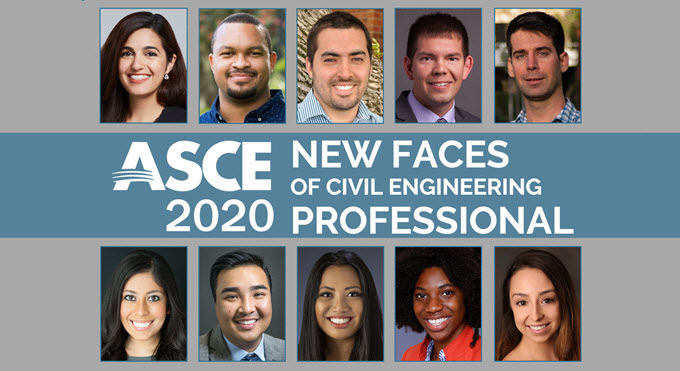The Caribbean is one of the most hazard-prone regions in the world.
So, for Daniel Campbell, growing up in the small island nation of St. Vincent and the Grenadines, he didn’t necessarily go looking for a career in disaster mitigation – it found him.
In just about the worst kind of way.
“There was a retaining wall failure in my country in September 2008,” Campbell said. “A massive retaining wall from a residence fell down on the highway after some days of rain. Torrential rain.
“The aunt of my girlfriend, she was trapped in the rubble of that landslide and she didn’t make it, unfortunately. It was tragic.
 “That’s the first time it really dawned on me that there are people who design these things, people who construct these things.”
“That’s the first time it really dawned on me that there are people who design these things, people who construct these things.”
Campbell was just finishing his second year at community college, ready to decide on the focus of his career pursuits. Out of tragedy came tremendous inspiration.
“I wanted to see how I could deal with the kinds of the issues that we have on my island and other Caribbean islands,” Campbell said. “We have a lot of landslides, flooding, hurricanes. The role of civil engineers in mitigating these hazards is very significant, and I thought I could have some impact there.”
Campbell was right. He’s done remarkable work around the Caribbean during the last decade, improving infrastructure and ensuring increased resilience. ASCE has honored him as a 2020 New Face of Civil Engineering.
Caribbean resilience
Campbell went on to get his bachelor’s degree in civil engineering at the University of Matanzas, in Cuba, followed by his master’s degree from the University of Auckland in New Zealand.
His heart has always been in his home country, though, and he is proud to have returned to help improve SVG’s infrastructure.
After the country suffered a 500-year flood event in 2013, Campbell joined several other civil engineers and architects to form Caribbean Engineering and Design Consultants Ltd., with the stated purpose of designing and constructing more resilient and sustainable structures.
They’ve since worked on many slope-stability projects, flood mitigation projects, residential housing projects and bridges.
Campbell also worked with the Pan American Health Organization to help retrofit St. Vincent’s health-care facilities so that they can continue to operate in extreme conditions. He led multidisciplinary teams in evaluating all 43 of the nation’s health-care facilities, before designing four new smart hospital retrofits, two of which have been constructed.
Campbell served as project engineer for the Digicel SVG Caribbean regional communications infrastructure project, leading a team conducting site-readiness and site-design surveys of all 200-plus government buildings in the country to recommend necessary rehabilitation works and optimal layout of information-and-communication technology infrastructure. He also coordinated the configuration and installation of all GWAN core nodes and networking devices in all facilities in SVG, as well as some in Grenada. Every government building now benefits from high-speed fibre connections to facilitate modern connectivity, while resilient subsea cables link all three island states (SVG, Grenada and St. Lucia) to provide full redundancy”.
And his work isn’t limited strictly to St. Vincent.
Campbell has been working since last fall as a short-term consultant for the World Bank on a housing recovery project in the Commonwealth of Dominica, an island nation to the north of SVG.
More than 4,000 small homes were destroyed by Hurricane Maria in 2017. Campbell is leading a team of engineers to do site assessments. They’ve managed 1,800 in just four months.
“After this site assessment, World Bank will give grants to rebuild houses,” Campbell said. “Here are people who have not received any assistance to date since their houses were destroyed in 2017. For whatever reason they’ve been overlooked before.
“To be able to lead a team of surveyors to be able to give objective, nonbiased grants to these people, solely based on their needs and vulnerabilities; to be able to be part of that process, I think this is one of the most rewarding moments so far.”
Working toward tomorrow
In addition to his professional work, Campbell cofounded a nonprofit group with some friends called The Initiative VC. Their stated mission is: “A society of young persons who are civically engaged, ambitious, academically and ethically guided, working toward creating the best future for those who follow on.”
They don’t want to give back to the community with a one-off donation but instead with a consistent program of assistance. They meet every week and have already organized career-day events, with an ambitious plan to provide secondary school students with a five-year suite of real-world curricula – making career choices, budgeting your money, managing your time, etc.
Campbell also recently became the youngest member of the St. Vincent Rotary Club and will serve as the group’s secretary next year.
All of this work is driven by his generous spirit and desire to help his community, so that when the next extreme event strikes, his country is resilient. He won’t ever forget the tragic loss of life 12 years ago in the landslide.
“It was really life-changing. In a small country of 110,000 people, it’s a very intimate setting. When a disaster happens to someone close to you, it hits home,” Campbell said.
“And that was 2008. Now we see the effects of hazards increasing on a year-to-year basis. More Category 5 hurricanes, more flooding, more landslides.
“We can see the effects of climate change around the world and see the importance of civil engineering coming up.
“I hope I have been able to contribute and help.”



